Birds are renowned for their inventiveness in nest building. Not only do they build nests on trees, but also in the ground by excavating holes or in dense vegetation.
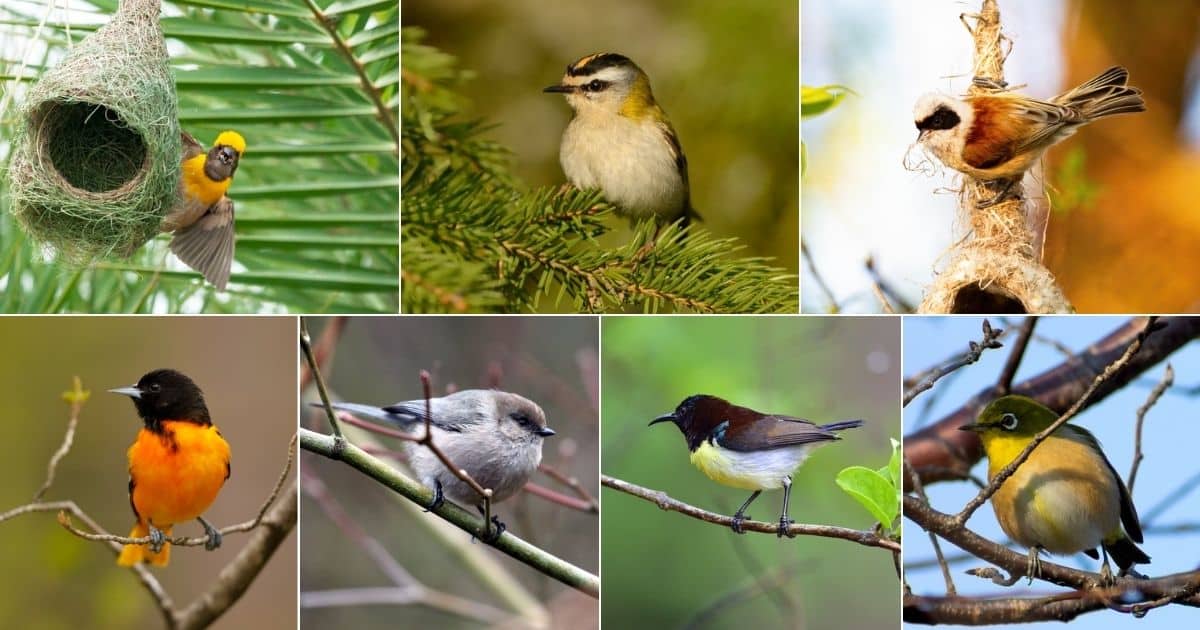
Talking of nesting in trees, are you aware that some birds are skilled at constructing pendulous or pendulous hanging nests? Some of the nests dangle so precariously low to the ground that they appear to defy gravity!
This post will look into 11 birds that build hanging nests and how they execute the feat.
Contents
1. American Bushtit
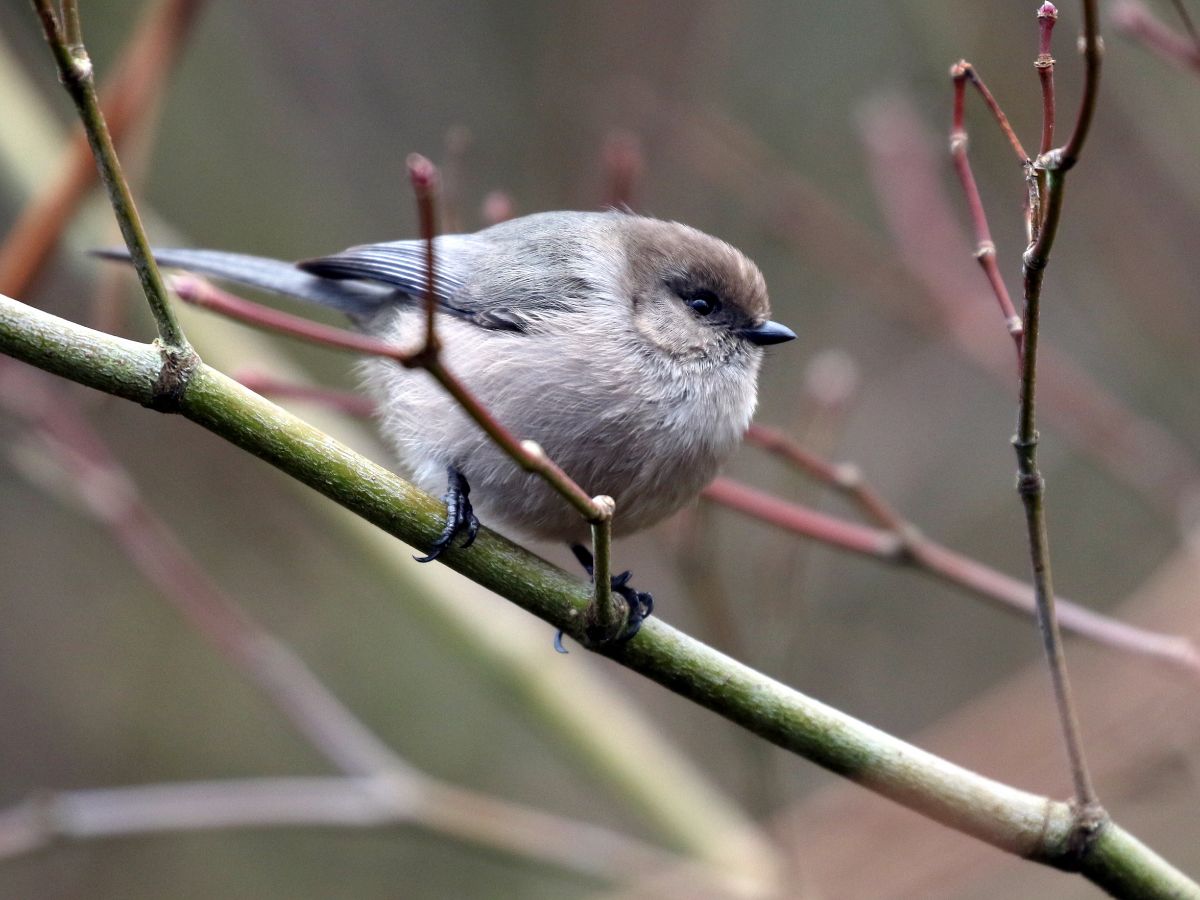
- Scientific Name: Psaltriparus minimus
- Length: 4.3″ (11 cm)
- Weight: 0.18-0.21 oz (5-6 g)
- Wingspan: 6” (15.2 cm)
American bushtits are often found in North America, notably the Western region and Mexico. These birds love living in urban parks, flower gardens, and mixed open forests.
American bushtits construct their signature pendulous nests from a combination of spider silk, lichen, moss, and feathers to offer comfort. Typically, the nests are suspended from tree branches between 1 and 30 meters in the air.
Both females and males work together to construct these spectacular nests. It could take them about a month to complete the nest.
2. Goldcrest
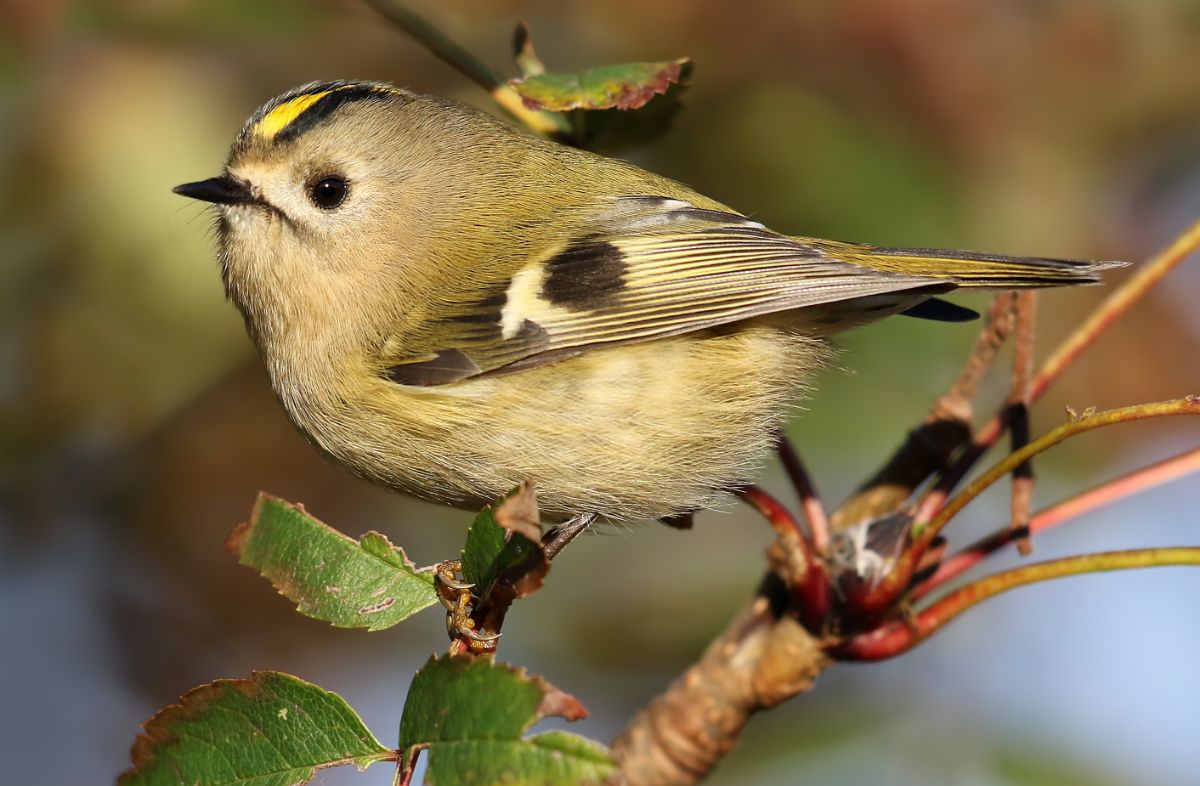
- Scientific Name: Regulus regulus
- Length: 3.3-3.7” (8.5-9.5 cm)
- Weight: 0.16-0.25 oz (4.5-7.0 g)
- Wingspan: 5.3-6.1” (13.5-15.5 cm)
Goldcrests are part of the kinglet family. These sequential nesters primarily breed in highland coniferous forests.
Their nests are commonly perched on coniferous branches. After the breeding season passes, they migrate to bushes and deciduous trees.
Goldcrests generally construct tidy, three-layered nests in a hammock position. The lichens, moss, and spider webs used to construct the nests are then covered with feathers to create a cozy environment for their young.
During breeding, females build nests, and males care for the young.
3. Baltimore Oriole
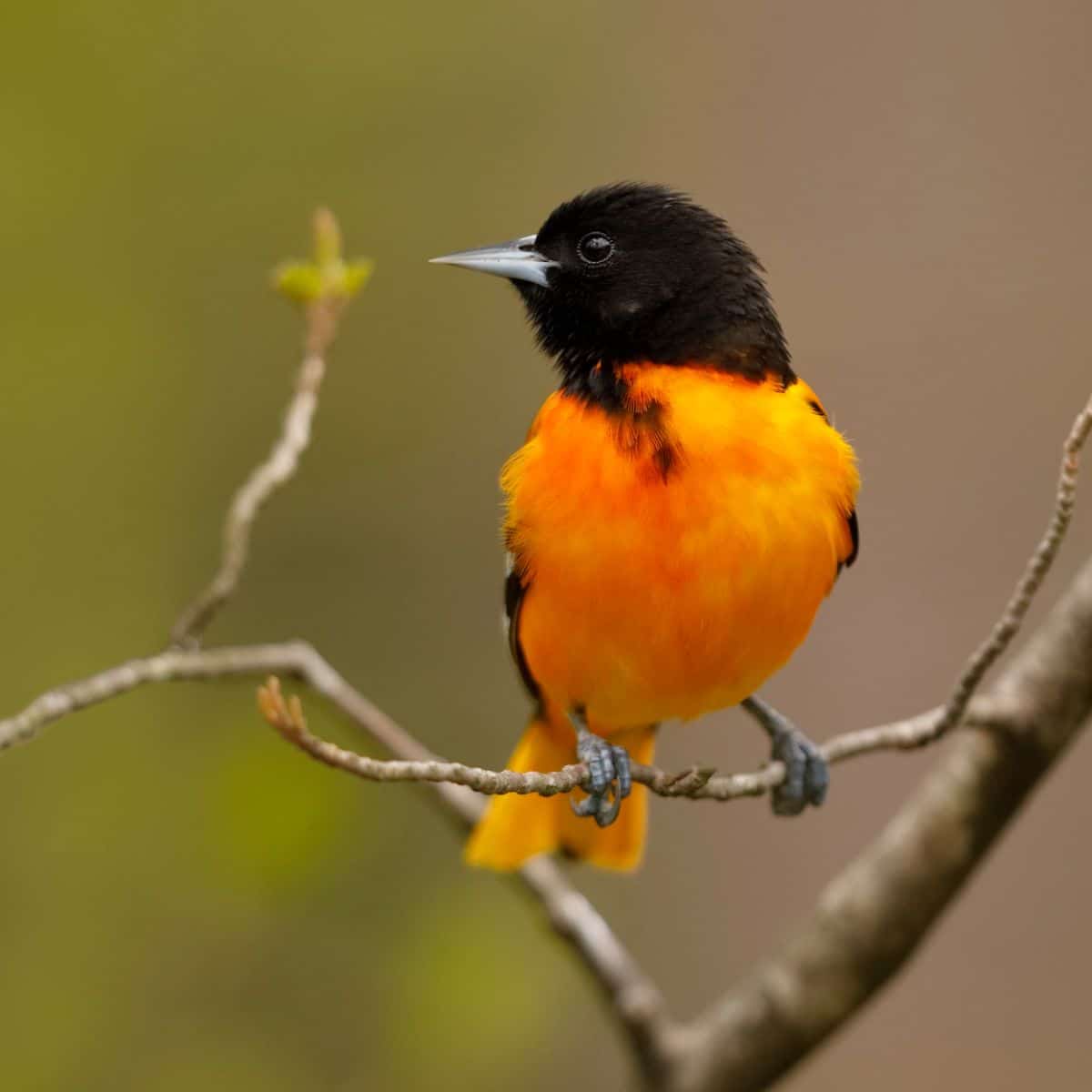
- Scientific Name: Icterus galbula
- Length: 6.5-8.0” (15.2-20.3 cm)
- Weight: 1-1.5 oz (28.3-42.5 g)
- Wingspan: 3.5-4” (13.5-15.5 cm)
The nesting grounds of the Baltimore Orioles are in the central and eastern parts of the North American continent. These birds are often found in tiny tree patches, riverbanks, woodland, and forest edges.
Baltimore Orioles’ nests are distinctive, hanging structures that resemble socks. The female makes the nest out of fine fibers, typically 3-4″ deep, with an opening of 2-3″ wide.
The nests of these birds are easily recognizable by their position. Either dangling from the underside of a branch or fastened to the side of a tree.
4. Montezuma Oropendola
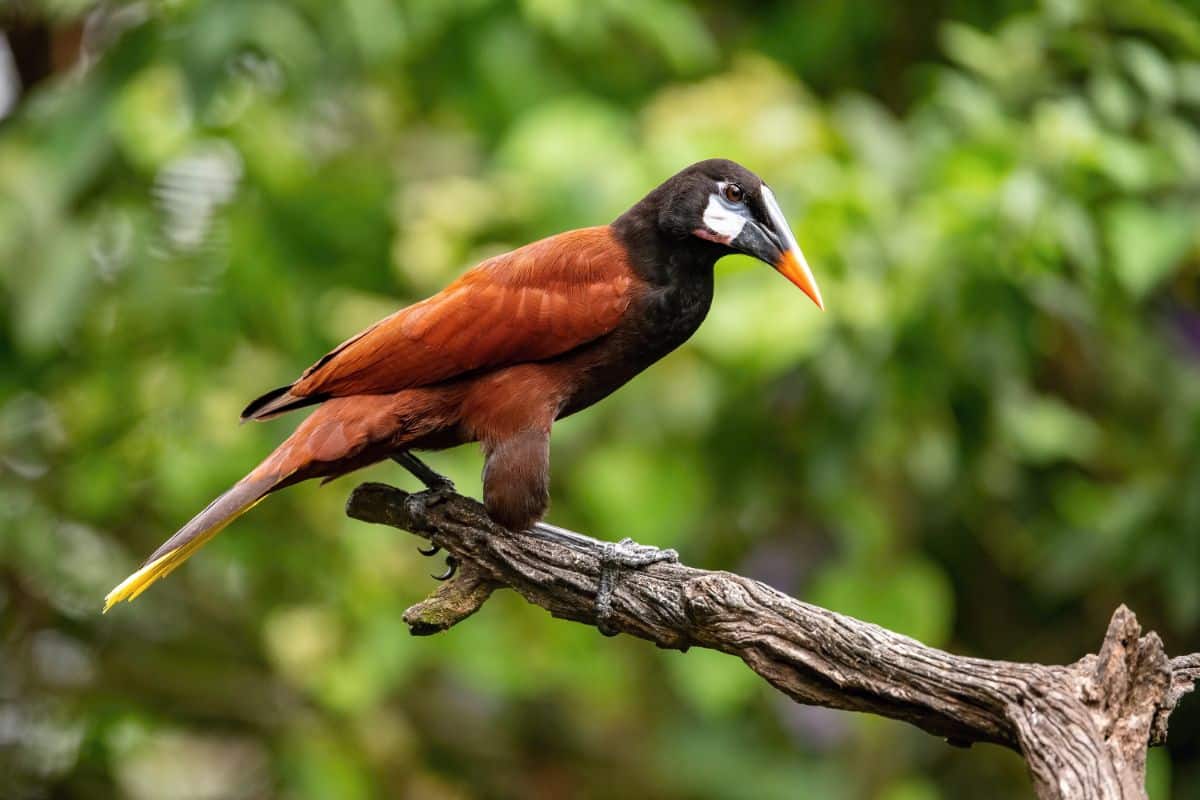
- Scientific Name: Psarocolius montezuma
- Length: 15-20” (38-50 cm)
- Weight: 8.1-18 oz (230-520 g)
- Wingspan: 18.5-20.9” (47-53 cm)
The nest of the Montezuma Oropendola is so amazing and perplexing. When viewed from a distance, the nests resemble low-hanging fruits, thanks to their structure and neat arrangement.
As a colony, the Montezuma usually creates roughly 30 weaved pouch nests built from fibers and vines. The hanging nests are about 24-71″ long and dangle approximately 30 meters from twigs.
5. Common Firecrest
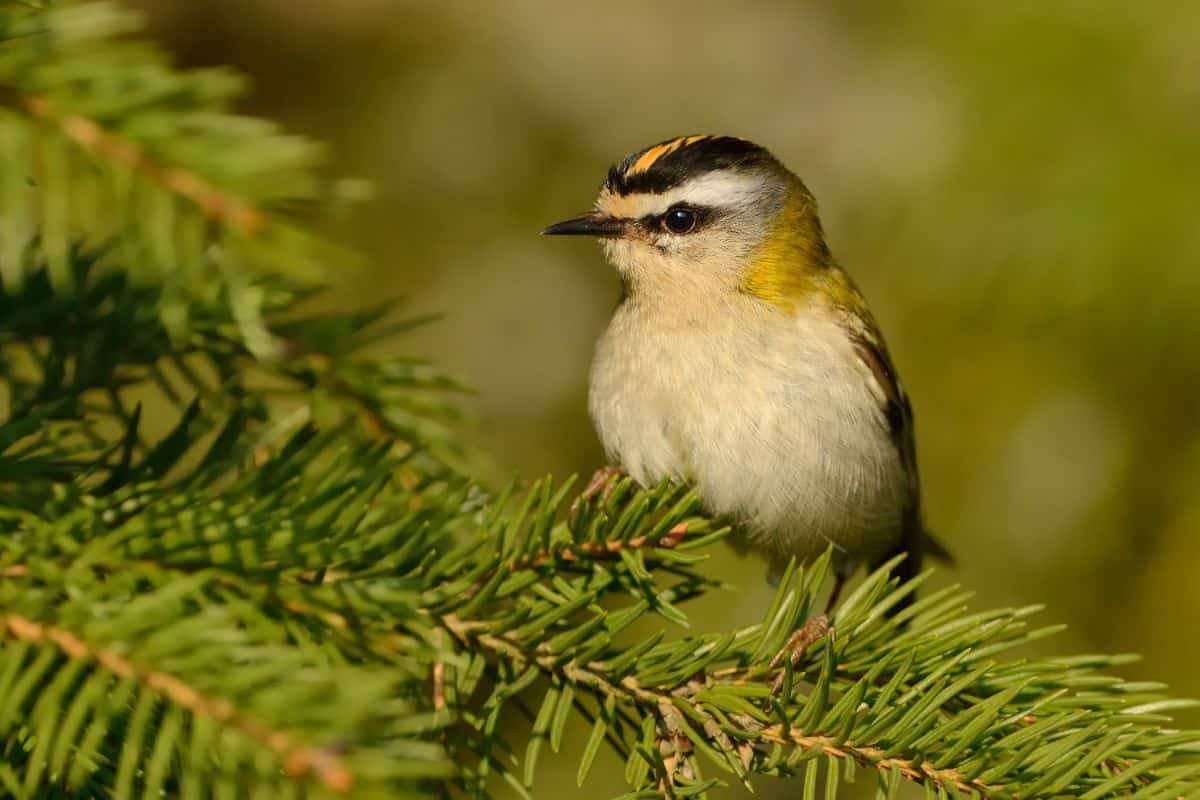
- Scientific Name: Regulus ignicapilla
- Length: 3.5” (9 cm)
- Weight: 0.14-0.25 oz (4-7 g)
- Wingspan: 5.1-6.3” (13-16 cm)
Europe and Northwestern Africa are the perfect breeding grounds for Common Firecrest. They love constructing hanging nests on tree branches in gardens and broadleaf or coniferous forests.
The females are primarily tasked with building the nest. Often, the Common Firecrest hangs the nest on tree branches closer to the ground. However, reports indicate that some of their nests are held 8-65 feet from the ground.
Generally, these nests are 3″ wide and 2-2.5″ deep, with walls measuring approximately 0.8″ thick.
6. Warbling White-Eye
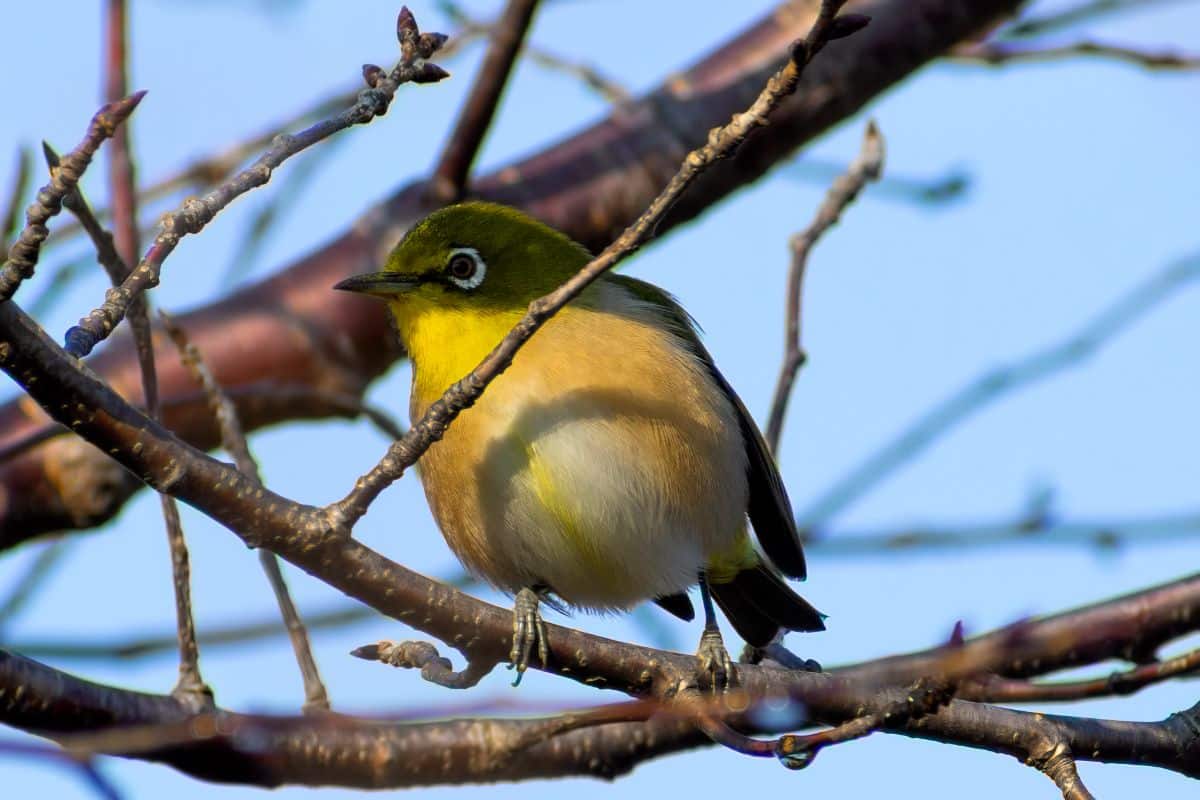
- Scientific Name: Zosterops japonicus
- Length: 4-4.5″ (10-11 cm)
- Weight: 0.34-0.45 oz (9.75-12.75 g)
- Wingspan: 2.76” (7 cm)
Warbling White-Eye hails from East Asia and is often found throughout Japan, South Korea, Indonesia, and the Philippines. Their preferred habitats include forests, thickets, shrublands, and open woodlands. They are also common in urban parks, gardens, plantations, and groves.
The Warbling White-Eye is monogamous, and the males mark the territory where the pair will build their nest. Often, nests are positioned about 3.2-98.4 feet above the ground. Their nests are typically cup-shaped, measuring 1.6″ wide and 2.2″ deep.
7. The Penduline Tit Bird
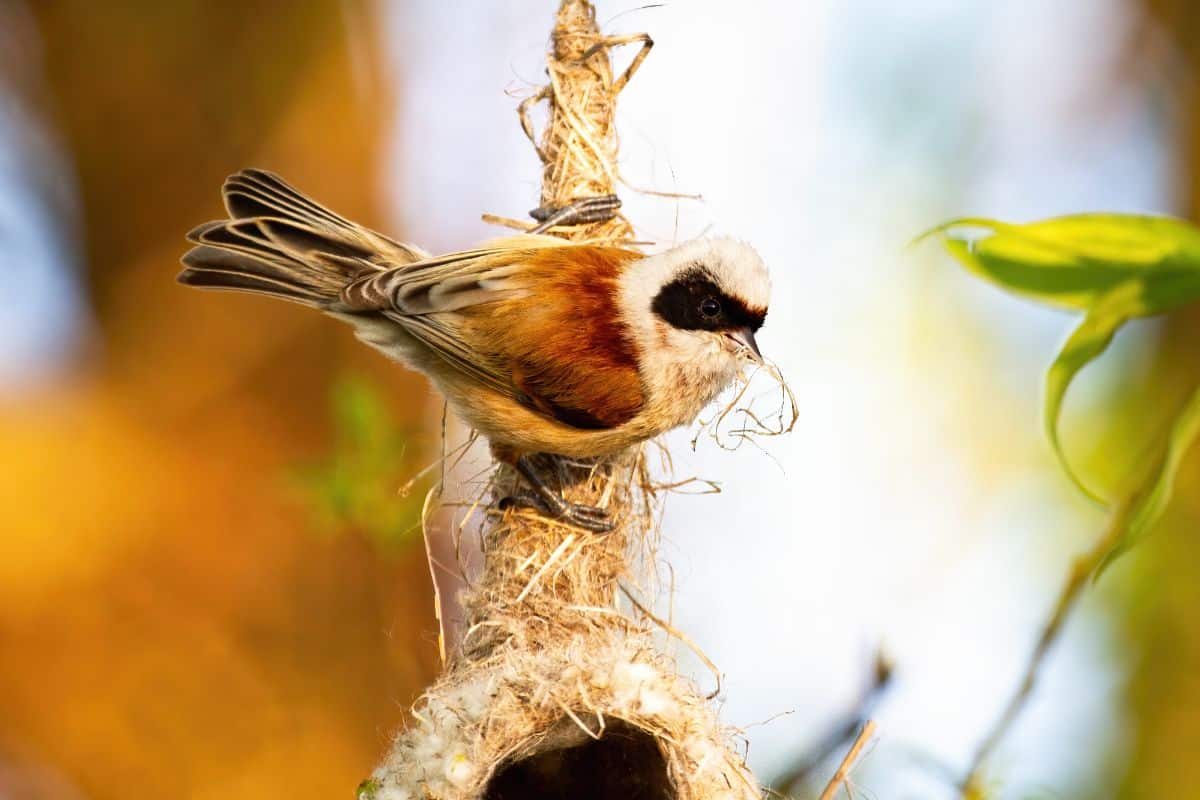
- Scientific Name: Remizidae
- Length: 3.9-4.5″ (10-11.5 cm)
- Weight: 0.23 oz (6.5 g)
- Wingspan: 6.3-7.1” (16-18 cm)
Pendulines are little passerine birds that build complex sack nests, typically suspended from trees above water.
As the name suggests, the Penduline Tit bird is renowned for building pear-shaped nesting from animal hair, plant material, and spider web. These materials offer a comfy home for their young.
8. Baya Weaver
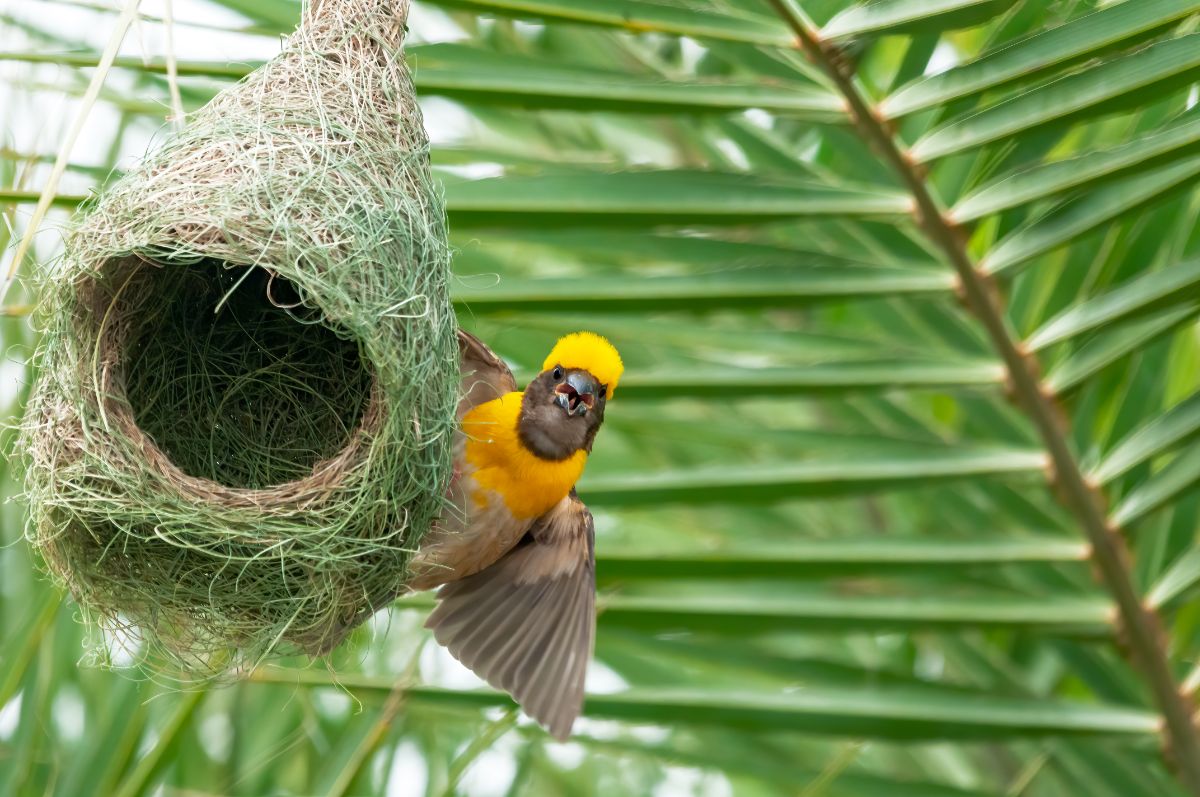
- Scientific Name: Ploceus philippinus
- Length: 5.5-6.3” (14-16 cm)
- Weight: 0.63-0.99 oz (18-28 g)
- Wingspan: 9.84-11” (25-28 cm)
The Baya Weaver is native to South and Southeast Asia. They inhabit grassland, cultivated regions, and shrub growths near freshwater or brackish.
Typically, the nests are suspended anywhere between 6.5-88 feet above water or ground level. The male constructs the nest to entice a female; he’ll only finish it if she approves it.
The hanging nests are retort-shaped, with an entry tunnel between 15.7-25.6″ long and a nesting chamber in the middle. A typical nest measures approximately 2.1″ deep and 2.1″ wide.
9. Warbling Vireo
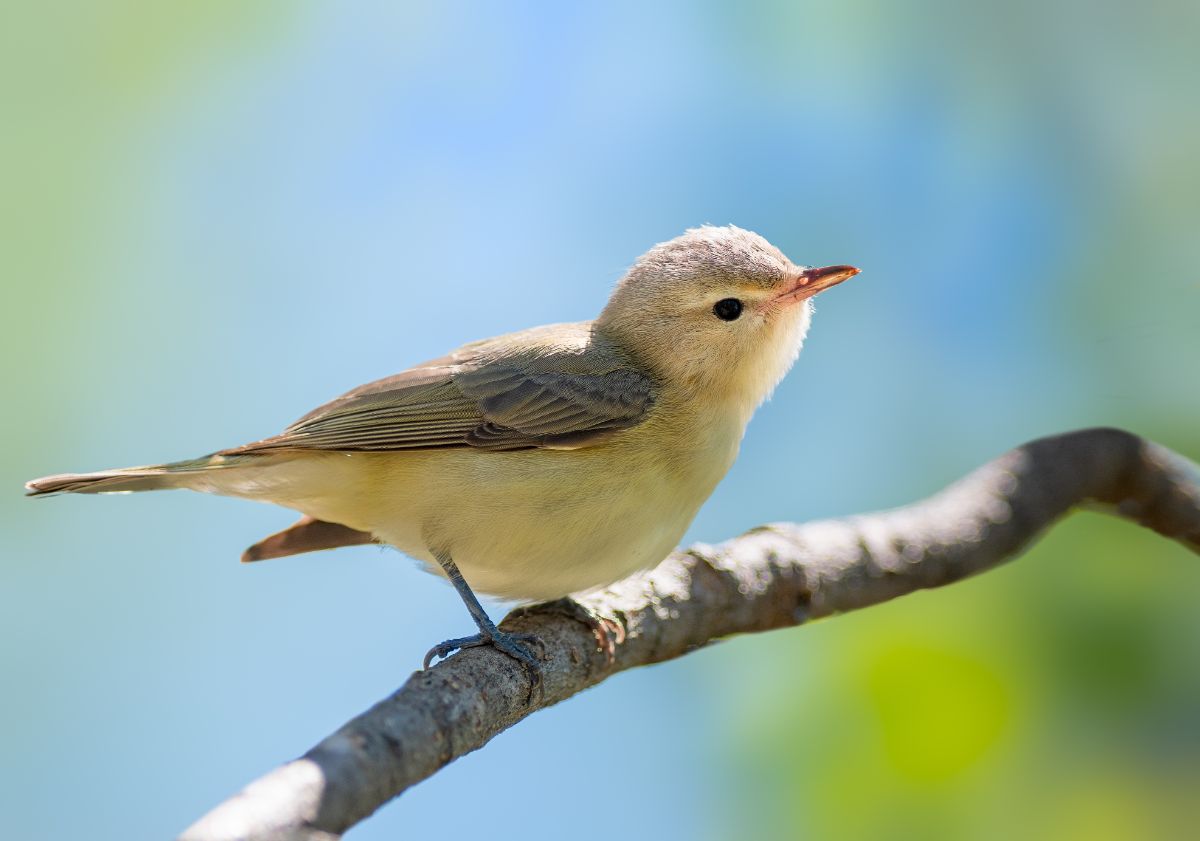
- Scientific Name: Vireo gilvus
- Length: 4.7-5.1” (12-13 cm)
- Weight: 0.3-0.6 oz (10-16 g)
- Wingspan: 8.7” (22 cm)
The Warbling Vireo loves inhabiting the established deciduous forests throughout the mating season. They favor habitats close to marshes, ponds, lakes, and streams. They also coexist with humans in camping grounds, urban parks, orchards, and neighborhoods.
The nests are built 3 to 140 feet from the ground, in the upper canopies or large deciduous trees or shrubs. These birds hang the nests from horizontal branches, constructing a rough, slightly rounded dangling cup.
Females are responsible for building the nests. A finished nest measures 2-3″ deep and 3″ wide.
10. Golden-Crowned Kinglet
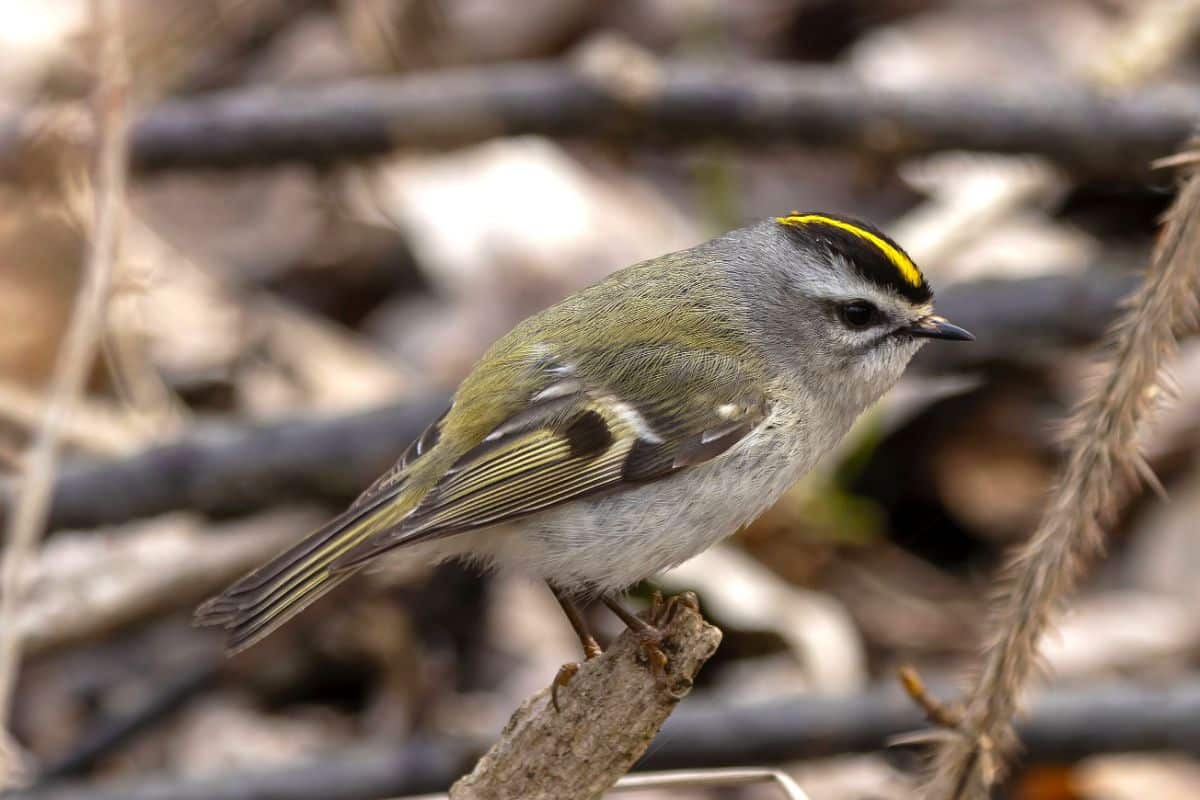
- Scientific Name: Regulus satrapa
- Length: 3.1-4.3” (8-11 cm)
- Weight: 0.14-0.28 oz (4-7.8 g)
- Wingspan: 5.5-7.1” (14-18 cm)
The Golden-crowned Kinglet prefers the coniferous forests of the mountains or the boreal zone for its breeding grounds. They also love nesting in deciduous and mixed forests, parks, and conifer plantations.
They prefer perching or hanging their nests around 60 feet above the ground on twigs. Both sexes construct the nest, which is usually deep, cup-shaped, and has four corners. Once complete, the nest is often 3″ wide and 3″ deep.
11. Purple-Rumped Sunbird
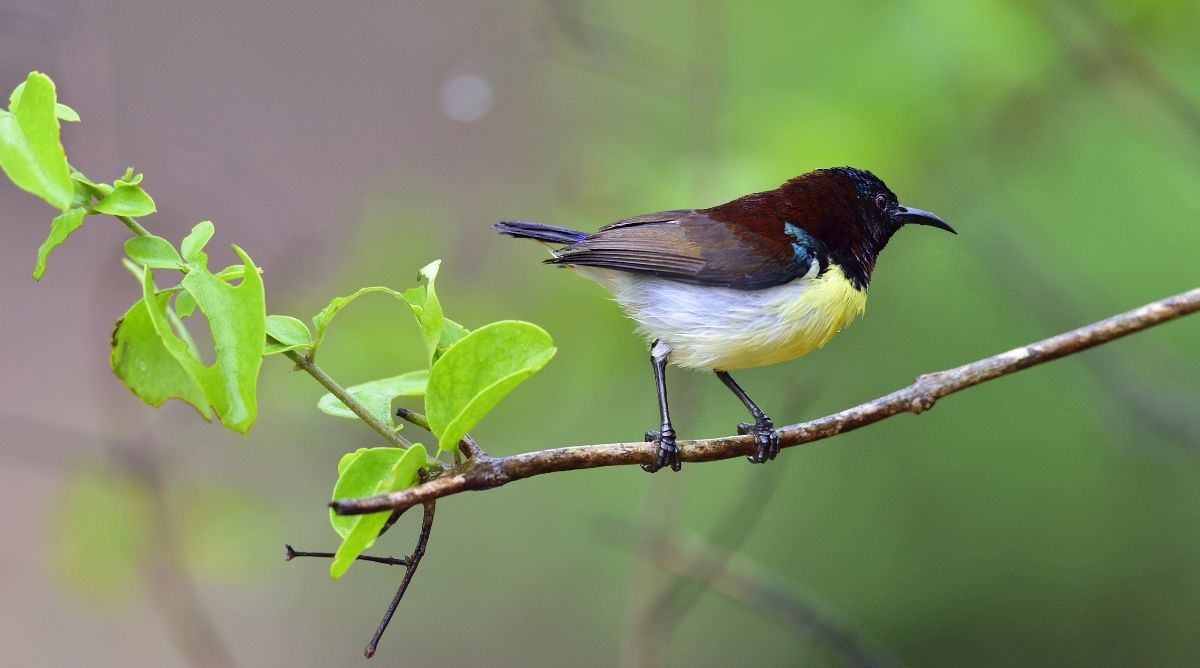
- Scientific Name: Leptocoma zeylonica
- Length: 4-4.7” (10-12 cm)
- Weight: 2.5-2.8 oz (70-80 g)
- Wingspan: 5.9-9.8” (15-25 cm)
The tiny Sunbird, also called the Purple-Rumped Sunbird, is commonly found in Bangladesh, Sri Lanka, and southern India. They often love inhabiting trees, cultivated areas, and shrubs rather than dense forests.
The female constructs the nest alone, which she does close to a structure or underneath an open porch. Often, the Purple-Rumped Sunbird positions the entry to her nest towards the bush for protection.
FAQs
Here are some of the commonly asked questions about birds that build beautiful hanging nests:
Which bird builds the most beautiful nest?
Weaver birds create intricately woven nests. They borrow their names from the attractively woven nests they create from dry twigs and grasses.
What is a hanging bird’s nest?
A hanging bird nest is any nest built some feet above the ground. Often, these nests are constructed on tall trees, but you can find others on low-lying tree branches.
What birds build fancy nests?
Bowerbirds, widespread in New Guinea and Australia, are renowned for the intricate and often whimsical constructions that males construct to entice females. The bowers are the biggest and most artfully ornamented structures ever constructed by another animal other than humans.
Final Thoughts
The diversity and distinctiveness of birds are mesmerizing. They’re gifted with the ability to create lovely nests. Whereas some birds build nests in the ground, many others build pensile or pendulous nests in tall trees.
They disguise themselves within the nest to evade predators while caring for the nestlings. They’ll also line the nests with feathers, soft plants, and fur to make their tiny homes as cozy as possible.
